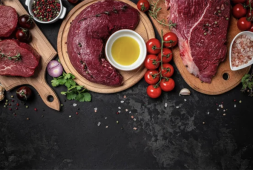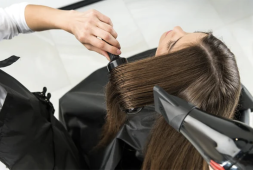
Scientists at the University of California in Davis have uncovered the reason why some individuals experience headaches after consuming red wine.
Their research has revealed that a natural flavanol compound found in red wines, known as quercetin, can disrupt alcohol metabolism, leading to the onset of headaches. Quercetin is naturally present in various fruits and vegetables, including grapes, and is recognized for its health benefits as an antioxidant.
However, when combined with alcohol, it can trigger adverse reactions.
According to Professor Andrew Waterhouse, “When it gets in your bloodstream, your body converts it to a different form called quercetin glucuronide. In that form, it blocks the metabolism of alcohol.”
The study, published in the journal Scientific Reports, sheds light on the varying amounts of quercetin in different wines, depending on the extent of sunlight the grapes absorb during the growth process.
“Quercetin is produced by the grapes in response to sunlight. If you grow grapes with the clusters exposed, such as they do in the Napa Valley for their cabernets, you get much higher levels of quercetin,” Prof. Waterhouse explained.
“In some cases, it can be four to five times higher.”
This flavanol has been identified as a potential culprit in the development of headaches in individuals who consume wine containing higher levels of quercetin. The accumulation of a toxin called acetaldehyde is implicated in causing the painful symptoms associated with red wine-induced headaches.
“Acetaldehyde is a well-known toxin, irritant, and inflammatory substance. Researchers know that high levels of acetaldehyde can cause facial flushing, headache and nausea,” said Dr. Apramita Devi.
Typically, individuals may experience a red wine headache within 30 minutes to three hours after consuming even a modest amount, such as a single glass.
Professor Morris Levin explained the incredibly old mystery, saying, “We postulate that when susceptible people consume wine with even modest amounts of quercetin, they develop headaches, particularly if they have a preexisting migraine or another primary headache condition.”
The discovery of the role played by quercetin in this process offers valuable insights into the mechanisms behind these headaches.
“The next step is to test it scientifically on people who develop these headaches, so stay tuned.”
Interestingly, the research team noted variations in susceptibility to red wine headaches among individuals.
To delve deeper into this phenomenon, the scientists plan to conduct human clinical trials. The aim is to unravel whether individuals who experience red wine headaches have enzymes that are more easily inhibited by quercetin or if they are simply more prone to the accumulation of the toxin acetaldehyde.
The study findings also open avenues for future research into the intricate interactions between compounds in wine and individual differences in metabolism. Understanding the factors contributing to red wine headaches can have implications for both casual wine drinkers and those who may be more susceptible to this adverse phenomenon.



